The S-mine system for the Tiger comprised five mine launchers on the tank's hull. They were intended for emergency defence against maurauding infantry, and they were to be fired by the tank commander, who was best placed to see what was happening around his vehicle.
Each of the 5 mine launchers was independently triggered by a signal from a single control box. Power came from the tank's 12V DC supply.
The S-mine system was added when the Tiger was already in production; indeed, Tiger 250031 (in an American museum) predates it. Fitting the new system into the existing tank raised a problem. The commander sat in the rotating turret; the mine launchers were on the hull. Ideally the control box should be fixed inside the turret, like the controls for the smoke generators. But that would require five additional signal wires running from turret to hull. The slip-ring rotating electrical joint between turret and hull had only eight positions, all of which were in use.
The solution was to put the control box on a long cable connected to the hull. The commander could lift the control box up to his station when needed; its use would be for only a few seconds, and so the rotation of the turret would not occur and the cable would not become tangled. For power, the control box had a plug on a lead which the commander could insert into one of the turret's electrical sockets.
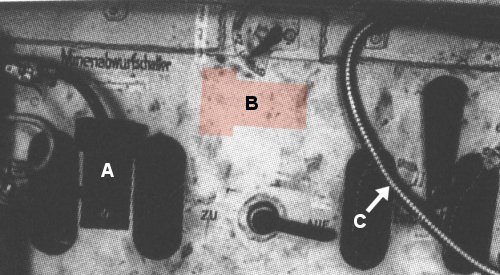
This photo shows the cable, marked "C", which had a flexible metal sleeve; the control box at the end of it is not visible. This is Tiger "131" at Bovington Museum, but this tank does not contain the cable or the control box at time of writing.
There was a small clip bolted to the firewall for storing the control box when it was not in use. It was labelled "Minenabwurfschalter" (Mine launcher switch) and is marked "A" in this photo.
In May 1943, the new engine type (HL230) obliged the Tiger's designers to create a door or opening exactly where this clip was located. They therefore moved the clip to the position "B" that I have outlined on the photo. This is where we find it in the "Mid" Tiger at Kubinka Museum. The S-mine system was deleted from the Tiger in October 1943 and so there are no components in the "Late" Tiger at Saumur Museum.
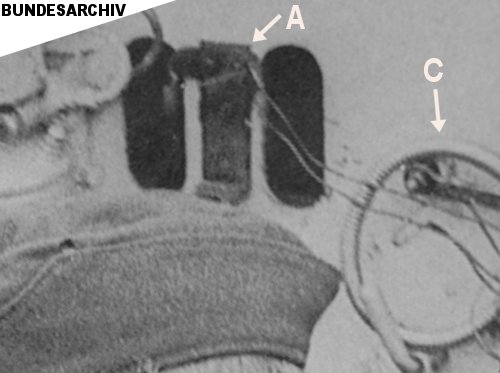
This wartime photo of another Tiger shows the clip in more detail. The cable is present too but is not stored in the clip as intended.
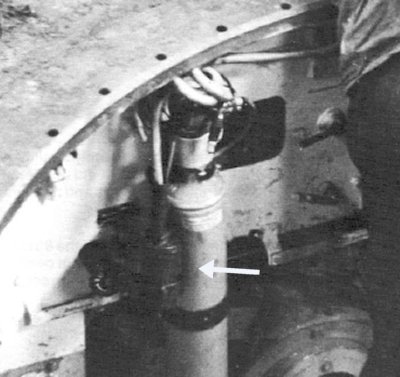
This wartime photo is the only image of the S-mine controller box that is known to me. The crew have wrapped the cable around the fire extinguisher and the box is dangling in its shadow, frustratingly difficult to see.
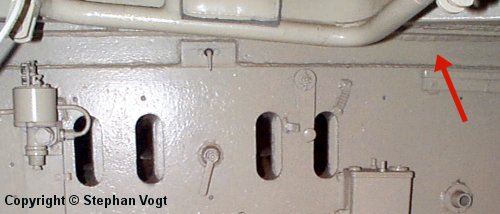
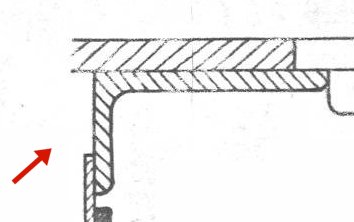
As for the attachment of the control cable to the tank; at the top of the Tiger's firewall there was a small niche running the full width of the vehicle. This photo, and an extract from a German diagram, show the niche. Originally it contained nothing except a couple of hangers for MG34 ammunition bags.
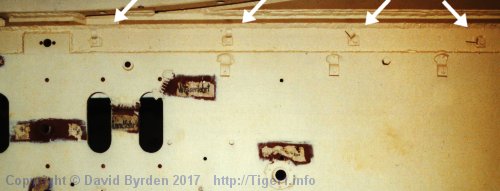
The S-mine control cable was fixed in this niche with a very basic technique; four large clips held a length of it. This photo shows the clips in the Bovington Tiger during restoration.
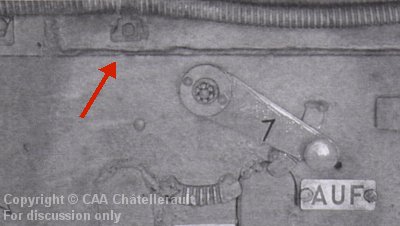
This wartime technical photo shows a closeup of the firewall. As it happens, we can see the S-mine control cable in the clips. This portion of it seems to be spray-painted the same colour as the wall.

The clips filled the niche between the central fuel switch and the ammunition bin, as this diagram shows. They were not precisely positioned. We must assume that the metal sleeved cable ended after the final clip and before the ammunition bin, which didn't allow room for it. The five signal wires emerged there and ran to the left or to the right as appropriate, still within the niche but using smaller cable clips.
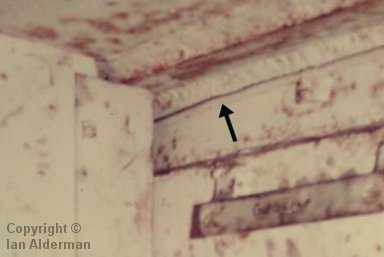
This is the Bovington Tiger before restoration. The insulated wire disappearing behind the right-hand ammunition box contains two of the trigger wires.
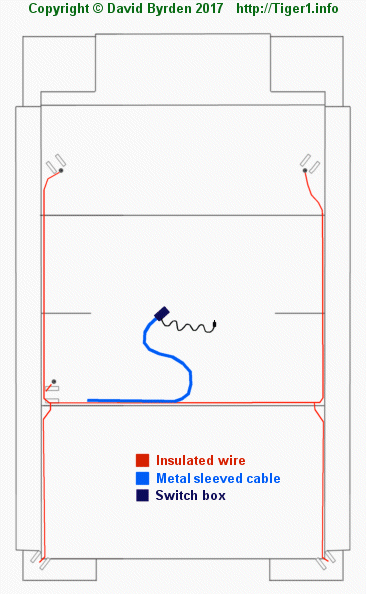
This sketch of the hull, seen from above, shows where the control cable and wires were located. Structural braces and walls within the hull are indicated.
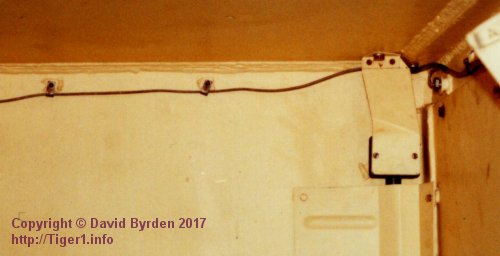
This is the Bovington tank during restoration. At the right end of the firewall, an S-mine wire goes behind the antenna shield and forward along the inner hull side.
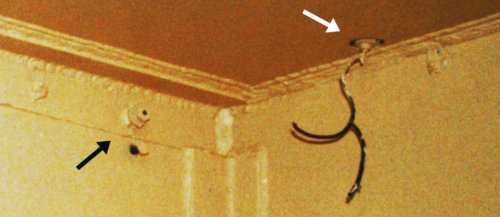
The same Tiger at an earlier stage of restoration. This is the other end of the firewall. There are penetrations in the roof and in the firewall for S-mine wires; both of them are waterproofed.
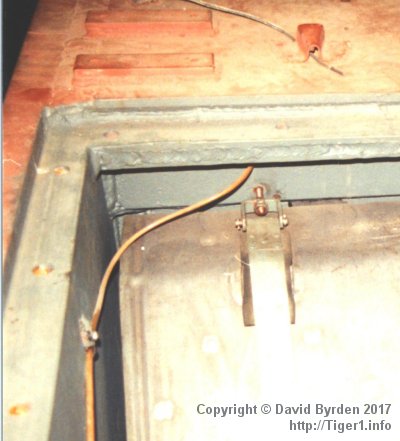
In the radiator compartment, the S-mine trigger wire passed over the fuel tank before clinging to the wall. It emerged at the extreme corner of the hull, under the movable grille.
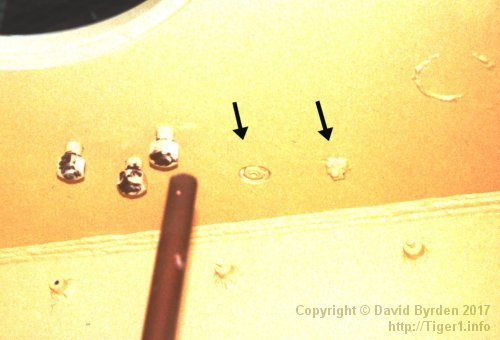
This is the exit point at the front right of the hull. In this compartment only, the wire ran along the ceiling because the wall was occupied by MG34 ammunition bags.
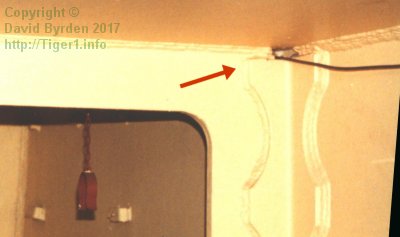
A gap in the welding of the internal roof braces allowed the S-mine wires to pass through them.